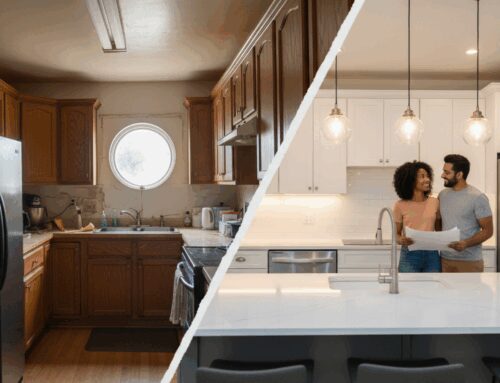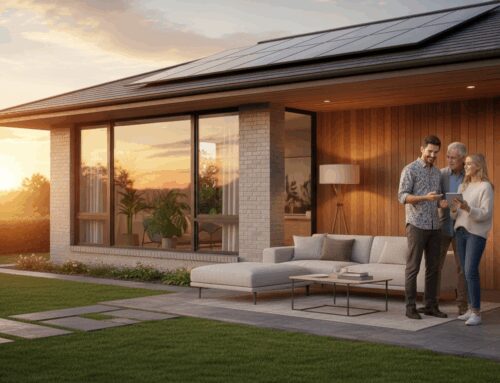Your kitchen is more than just a place to cook—it’s the heart of your home, where meals become memories and conversations flow as freely as the coffee. Yet too many homeowners dive into kitchen renovations without proper planning, leading to costly mistakes and disappointing results. Designing a kitchen remodel requires balancing aesthetics with functionality, budget with quality, and dreams with practicality. Whether you’re dreaming of a gourmet cooking space or a family-friendly hub, this comprehensive guide will walk you through every step of creating your perfect kitchen.
Understanding Your Kitchen Remodel Goals
Before you sketch a single cabinet or choose a countertop sample, you need to define what you want to achieve with your kitchen redesign. Are you looking to increase your home’s resale value, create a more efficient cooking space, or simply update tired aesthetics? Understanding your primary motivation will guide every decision that follows. Consider how you currently use your kitchen versus how you’d like to use it—perhaps you need better traffic flow for multiple cooks, more storage for your growing family, or upgraded appliances for serious entertaining. In our guide on smart home renovation budgeting, we emphasize how clear goals prevent scope creep and keep your project on track.
Assessing Your Current Kitchen Layout
Take a critical look at your existing kitchen’s strengths and weaknesses. Does the classic work triangle between sink, stove, and refrigerator function well? Are there awkward corners or wasted spaces? Measure everything carefully and note what you’d keep, change, or completely reimagine. Many homeowners discover that minor layout adjustments can deliver major improvements without the expense of moving plumbing or gas lines. Remember that even in a complete kitchen overhaul, working within your existing footprint can save thousands of dollars while still transforming the space.
Creating Your Kitchen Remodel Budget
Financial planning is arguably the most crucial aspect of designing a kitchen remodel that doesn’t become a financial nightmare. Industry experts recommend allocating 5-15% of your home’s value for a kitchen renovation, with the average project costing between $25,000 and $50,000. Break your budget into categories: cabinetry (typically 25-35% of total), appliances (15-20%), installation labor (15-20%), countertops (10-15%), and the remainder for flooring, lighting, backsplash, and unexpected expenses. Always include a contingency fund of 10-20% for surprises like outdated wiring or structural issues discovered during demolition.
Budget-Friendly Kitchen Design Strategies
Several strategic approaches can help you achieve a high-end look without the premium price tag. Consider refacing rather than replacing cabinets, choosing quartz instead of marble countertops, or opting for open shelving in select areas. Focus your splurges on elements you interact with daily—like a quality faucet or comfortable flooring—while saving on decorative items. Our article on cost-effective home upgrades reveals how strategic investments deliver the best return both for your enjoyment and potential resale value.
Essential Elements of Kitchen Layout Design
The foundation of any successful kitchen remodel is a functional layout that supports how you actually live. While the classic work triangle remains relevant, contemporary kitchen design has evolved to include zones for specific tasks: preparation, cooking, cleaning, and storage. Consider traffic patterns, especially in homes with multiple cooks or children doing homework while meals are prepared. Popular layouts include the efficient galley kitchen, versatile L-shaped design, social U-shaped arrangement, and the increasingly popular kitchen island configuration that creates a natural gathering spot.
Maximizing Kitchen Storage Solutions
Innovative storage transforms how a kitchen functions. Beyond standard cabinets, consider incorporating:
- Pull-out pantry systems for easy access to dry goods
- Deep drawers instead of lower cabinets for pots and pans
- Vertical dividers for baking sheets and cutting boards
- Corner solutions like lazy Susans or magic corners
- Over-island pot racks for frequently used cookware
Smart storage design eliminates clutter and makes every item easily accessible, turning chaotic kitchens into organized spaces that truly work for you.
Selecting Materials and Finishes for Your Kitchen
The materials you choose will define both the aesthetics and durability of your new kitchen. For cabinetry, consider solid wood for traditional elegance, plywood boxes with wood fronts for quality construction, or thermofoil for budget-friendly contemporary styles. Countertop selection involves balancing beauty with practicality—granite offers natural variation, quartz provides consistency and durability, while butcher block brings warmth but requires maintenance. When choosing flooring, prioritize spill resistance and comfort underfoot, with luxury vinyl plank emerging as a popular choice for its realistic wood looks and waterproof properties.
Kitchen Lighting Design Strategies
Proper lighting transforms a kitchen from merely functional to truly fabulous. Layer three types of lighting for optimal results: ambient (general illumination), task (focused on work areas), and accent (highlighting features). Under-cabinet lighting eliminates shadows on countertops, pendant lights over islands provide both task lighting and style, and dimmer switches allow you to adjust the mood from bright morning food prep to soft evening entertaining. Consider energy-efficient LED options throughout, which offer long lifespan and cool operation perfect for kitchen environments.
Working With Kitchen Design Professionals
While some homeowners attempt DIY kitchen remodels, most benefit from professional guidance. Kitchen designers bring expertise in space planning, material selection, and problem-solving that can prevent expensive mistakes. When interviewing potential designers, ask about their experience with projects similar in scale and style to yours, request references, and review their portfolio carefully. Understand their fee structure—some charge hourly or flat fees, while others work on commission from product sales. A good designer will listen to your needs rather than imposing their personal preferences, helping translate your vision into a functional reality.
Navigating the Kitchen Remodel Timeline
A typical kitchen renovation takes 6-12 weeks from planning to completion, though complex projects can extend longer. The process generally follows this sequence: design and planning (2-4 weeks), ordering materials (2-6 weeks), demolition (1-3 days), structural/mechanical work (1-2 weeks), installation of cabinets and countertops (1-2 weeks), and finishing touches (1 week). Understanding this timeline helps manage expectations, especially during the messy middle phase when your kitchen is completely out of commission. Planning for alternative cooking arrangements during this period reduces stress and keeps your household running smoothly.
Avoiding Common Kitchen Remodel Mistakes
Even with careful planning, certain pitfalls frequently derail kitchen renovations. Insufficient lighting, poor ventilation, and awkward clearances between elements rank among the most common regrets. Avoid placing the refrigerator too far from prep areas, skimping on counter space near appliances, or creating islands that disrupt traffic flow. Another frequent mistake is focusing too heavily on trends that may quickly date your kitchen—while incorporating current styles can feel exciting, timeless elements ensure your investment remains appealing for years to come. For more on balancing trends with longevity, our resource on timeless home design elements helps you make choices you won’t regret.
Designing a kitchen remodel represents a significant investment of time, money, and emotion, but the reward is a space that truly serves your household’s needs while adding value to your home. By following these steps—defining your goals, establishing a realistic budget, creating a functional layout, selecting appropriate materials, and working with the right professionals—you’ll navigate the process with confidence. Remember that the most successful kitchen renovations balance beauty with practicality, creating a space where form and function work in perfect harmony for years of enjoyment.






Leave A Comment